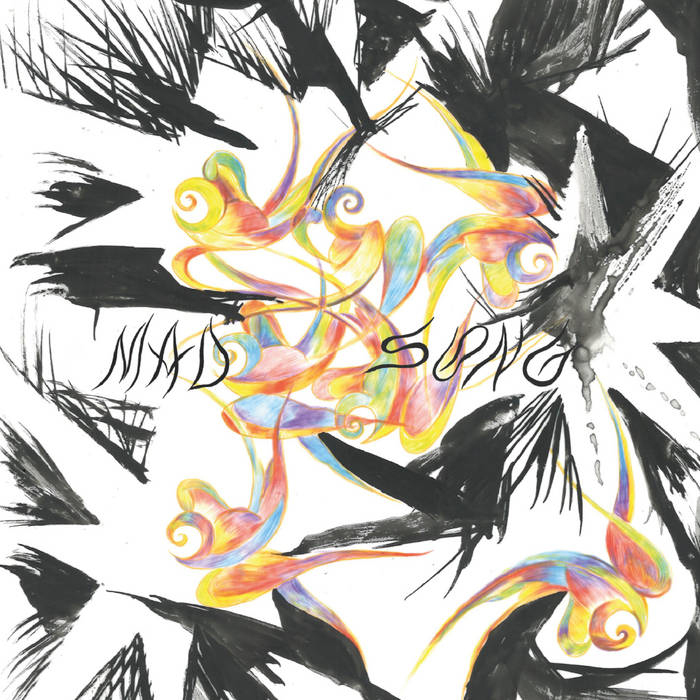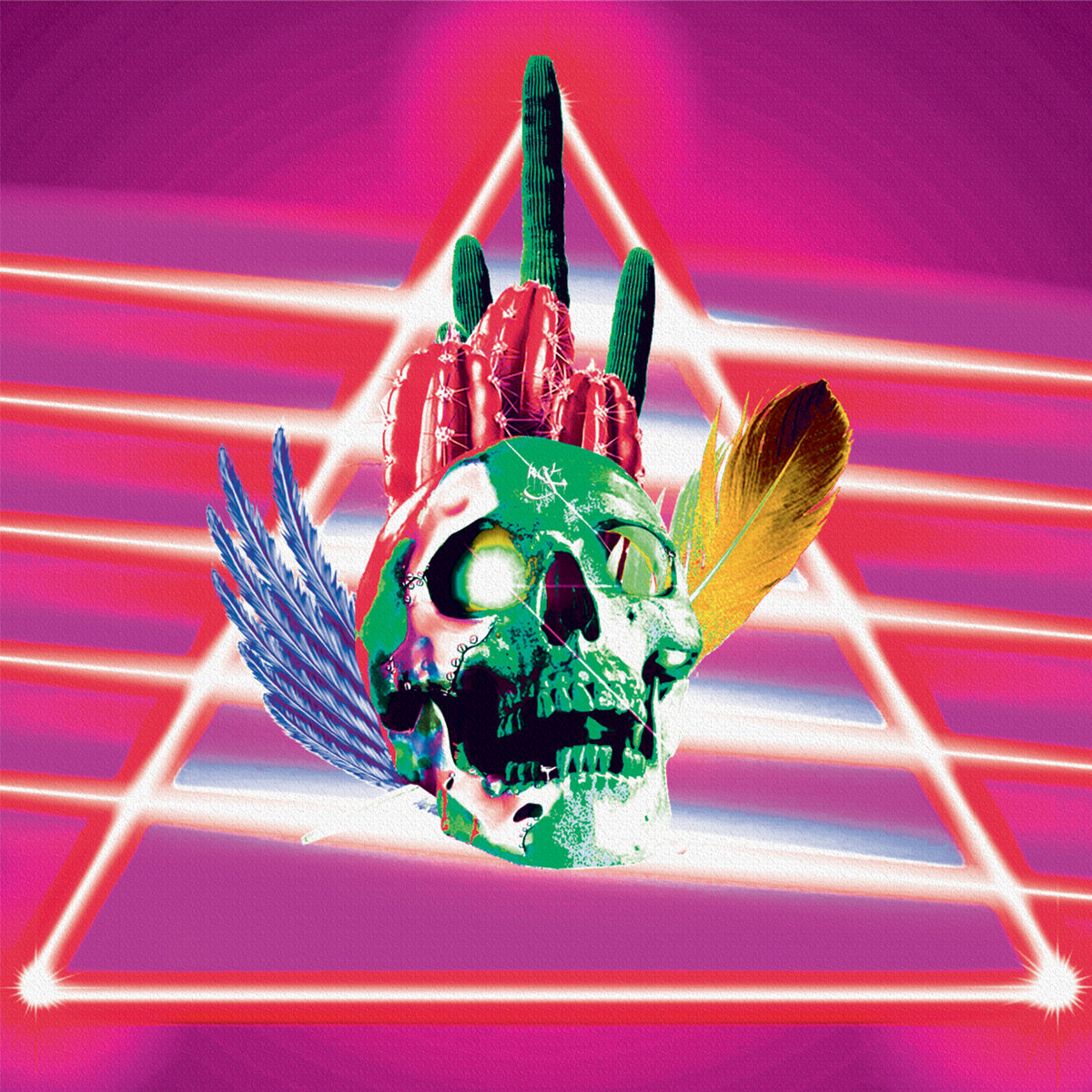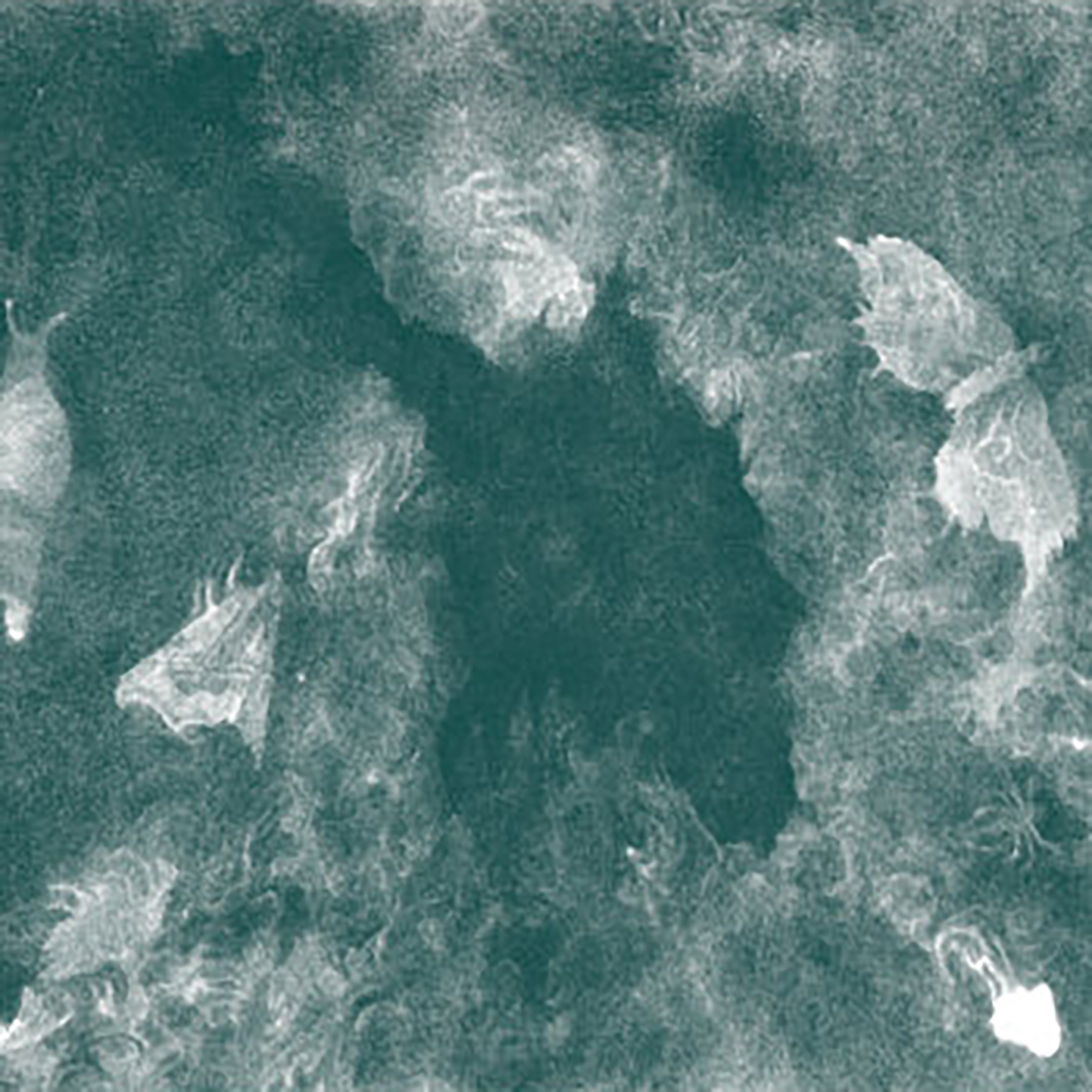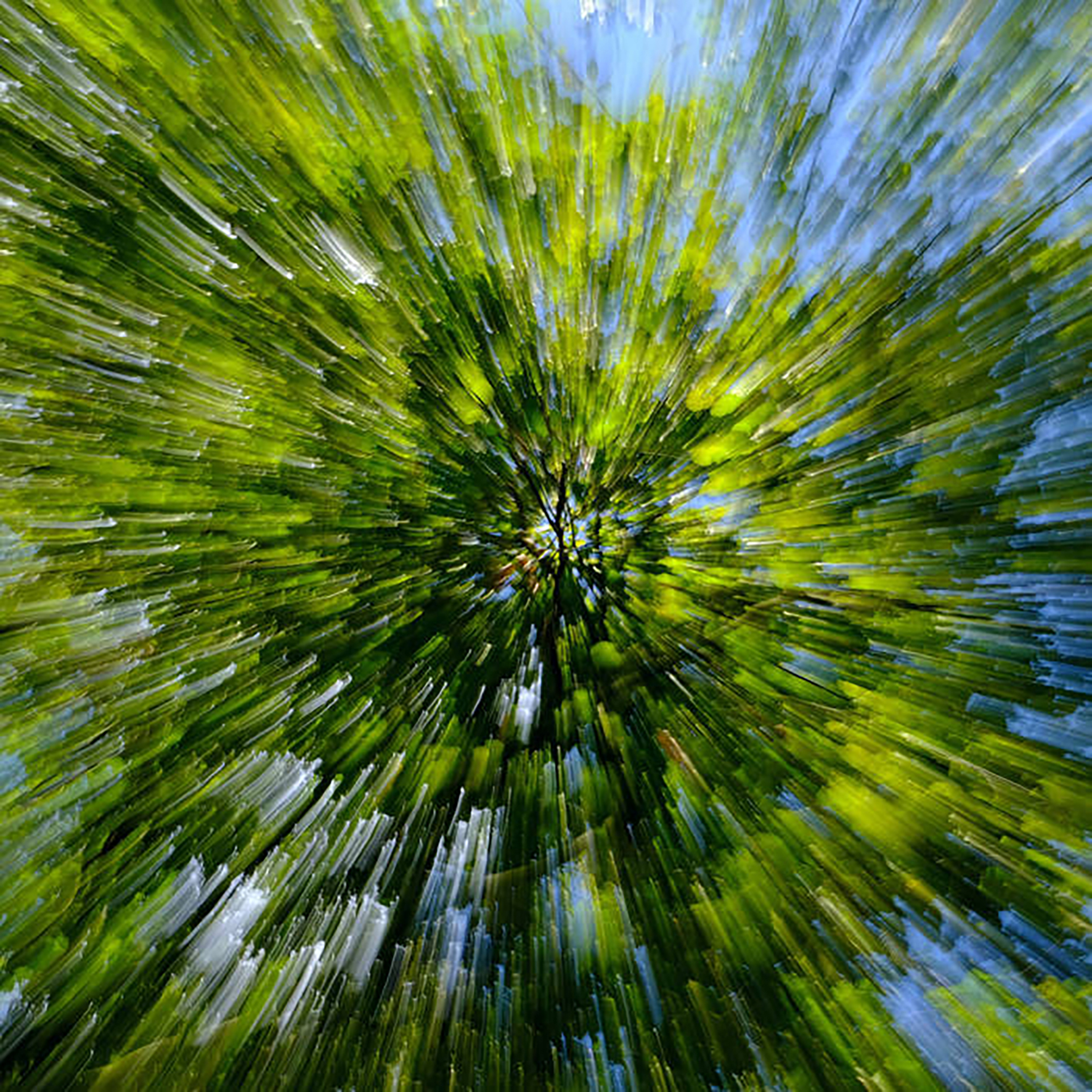 I have been aware of Daniel Bachman's work for quite some time, as he has always been one of the more reliably excellent and virtuosic artists in the post-Fahey "American Primitive" milieu, but I was apparently not paying nearly enough attention to notice how far he had evolved beyond that scene in recent years. I believe Bachman first started to conspicuously head in this more psych-minded and abstract direction with 2016's self-titled release, so I suppose I have some catching up to do, yet Axacan is the album that is currently being hailed as a masterpiece so it seemed like a good place to start. Amusingly, I think it might actually drift too far from Bachman's instrumental prowess to land in my own personal pantheon of masterworks, but it is certainly one hell of a bold, surprising, and radical release. To my ears, it resembles some kind of impressionistic and hallucinatory "found footage" diary of unsettling sound collages far more than it does a guitar album. In fact, Axacan so vividly evokes disjointed, elliptical, and poetic scenes from the aftermath of an apocalypse that it calls to mind a classic George Romero zombie film as reimagined by Terrence Mallick.
I have been aware of Daniel Bachman's work for quite some time, as he has always been one of the more reliably excellent and virtuosic artists in the post-Fahey "American Primitive" milieu, but I was apparently not paying nearly enough attention to notice how far he had evolved beyond that scene in recent years. I believe Bachman first started to conspicuously head in this more psych-minded and abstract direction with 2016's self-titled release, so I suppose I have some catching up to do, yet Axacan is the album that is currently being hailed as a masterpiece so it seemed like a good place to start. Amusingly, I think it might actually drift too far from Bachman's instrumental prowess to land in my own personal pantheon of masterworks, but it is certainly one hell of a bold, surprising, and radical release. To my ears, it resembles some kind of impressionistic and hallucinatory "found footage" diary of unsettling sound collages far more than it does a guitar album. In fact, Axacan so vividly evokes disjointed, elliptical, and poetic scenes from the aftermath of an apocalypse that it calls to mind a classic George Romero zombie film as reimagined by Terrence Mallick.
After experiencing Axacan for the first time, I went back and listened to some other recent Bachman albums, as I was very curious to see when he started making such a decisive break from his earlier work. In doing so, I discovered that Bachman had already released the masterpiece that I was hoping for with 2018's The Morning Star. Having achieved that, he apparently decided to head into far weirder and darker terrain with Axacan, which certainly would have felt appropriate at the time (it was recorded in the first half of 2020). Notably, Axacan does not particularly sound like an album made by a guitarist beyond the churning and chiming tour de force "Coronach." Instead, it feels like a series of enigmatic and fragmented memories from a traumatic period (if not scenes from an actual horror movie) in which someone is occasionally playing or tuning a guitar. That dark and hallucinatory trip starts innocently enough, however, as "Accokeek Creek" opens with the hissing sounds of suburban lawn sprinklers, but an escalating undercurrent of ominous murk soon culminates in a ravaged dictaphone recording of someone announcing the day's date. The descent into nightmare terrain from there is initially somewhat slow and subtle, but "Ferry Farm" transforms a nocturnal chorus of chirping frogs into a lysergic jungle of terror. In fact, it ends with the sound of a car door opening and an engine starting, suggesting that someone is hurriedly fleeing an encroaching horror. Apparently they made it, as the next scene ("Blue Ocean 0") materializes as a droning harmonium on a desolate, windswept beach before the focus shifts to someone paddling slowly out to sea. Once I reach the island, however, it feels like I have been sucked into a wobbly VHS tape of someone's family vacation and everything only grows exponentially more phantasmagoric from there. In the remaining pieces, I am treated to a parade of creepy and surreal sounds alternately resembling ominous radio transmissions, eerie moans of massive shipwrecked hulls, fireworks in a deep cave, a subterranean helicopter, an approaching motorboat, cows startled by a volcano, smoldering ruins, and a chorus of ghostly owls. It all amounts to quite a haunting, vivid, and unsettlingly ambiguous and fragmented mindfuck (and one that sucks me in deeper every time I listen). This will absolutely be the finest headphone album of the year.
Samples can be found here.



 It has been nearly four years since the last Colleen album, which is certainly not the first lengthy gap in Cécile Schott's wonderful discography, but she definitely seemed to be thriving and experiencing a creative renaissance since signing to Thrill Jockey. As it turns out, that hiatus was far from intentional, as Schott has been plagued by quite an impressive run of personal misfortunes and upheavals since A Flame My Love, A Frequency was released (some of which certainly inform the album's searching lyrical themes). While I do not subscribe to the "suffering inspires great art" myth, I do think the long break between albums allowed Schott enough time, solitude, and introspection to make The Tunnel and the Clearing far more of a leap forward than it may have been otherwise. It does share its predecessor's conspicuous lack of viola de gamba though, as Schott remains committed to exploring the potential of just a simple synthesizer and a few well-chosen pedals. That similarity aside, this latest opus sounds completely different than any other Colleen album, as it feels like Schott just invented her own incredibly cool strain of organ-driven hypnagogic pop (and one fitfully enlivened by delightful Latin rhythms, no less). In fact, I briefly wondered if she had somehow managed to customize a synthesizer to be played with a bow. This is unsurprisingly yet another excellent Colleen album.
It has been nearly four years since the last Colleen album, which is certainly not the first lengthy gap in Cécile Schott's wonderful discography, but she definitely seemed to be thriving and experiencing a creative renaissance since signing to Thrill Jockey. As it turns out, that hiatus was far from intentional, as Schott has been plagued by quite an impressive run of personal misfortunes and upheavals since A Flame My Love, A Frequency was released (some of which certainly inform the album's searching lyrical themes). While I do not subscribe to the "suffering inspires great art" myth, I do think the long break between albums allowed Schott enough time, solitude, and introspection to make The Tunnel and the Clearing far more of a leap forward than it may have been otherwise. It does share its predecessor's conspicuous lack of viola de gamba though, as Schott remains committed to exploring the potential of just a simple synthesizer and a few well-chosen pedals. That similarity aside, this latest opus sounds completely different than any other Colleen album, as it feels like Schott just invented her own incredibly cool strain of organ-driven hypnagogic pop (and one fitfully enlivened by delightful Latin rhythms, no less). In fact, I briefly wondered if she had somehow managed to customize a synthesizer to be played with a bow. This is unsurprisingly yet another excellent Colleen album. Saltern’s latest Yoshi Wada reissue unhappily coincides with the composer's unexpected passing, but at least he managed to live long enough to see his work get some wider appreciation in recent years. Or at least managed to see some of his major albums finally get remastered and released outside Japan, as "wider appreciation" is very relative when one's vision is as unapologetically challenging as Wada's. In fact, I always viewed him as a Final Boss in the appreciation of difficult and adventurous music, as it takes a lot of immersion in dissonant and outré sounds before one reaches the "I crave a deep dive into avant-garde bagpipes" stage. In fact, I am not sure I am yet there myself. Given that, The Appointed Cloud is probably more for devout connoisseurs of sound art's more prickly fringes than, say, the heavy drone of Wada's 2009 triple LP Earth Horns With Electronic Drone. However, this album was one of Wada's personal favorites, as it documents the "memorable" opening performance of his "first large-scale, interactive installation" at the Great Hall of the New York Hall of Science in 1987 (which featured "spaceships hanging from the ceiling so people felt like they were traveling in outer space"). That certainly seems like a suitably disorienting environment for sounds this fascinating and unique. I dearly wish someone had thought to film some post-concert audience reactions, as I bet they were quite something.
Saltern’s latest Yoshi Wada reissue unhappily coincides with the composer's unexpected passing, but at least he managed to live long enough to see his work get some wider appreciation in recent years. Or at least managed to see some of his major albums finally get remastered and released outside Japan, as "wider appreciation" is very relative when one's vision is as unapologetically challenging as Wada's. In fact, I always viewed him as a Final Boss in the appreciation of difficult and adventurous music, as it takes a lot of immersion in dissonant and outré sounds before one reaches the "I crave a deep dive into avant-garde bagpipes" stage. In fact, I am not sure I am yet there myself. Given that, The Appointed Cloud is probably more for devout connoisseurs of sound art's more prickly fringes than, say, the heavy drone of Wada's 2009 triple LP Earth Horns With Electronic Drone. However, this album was one of Wada's personal favorites, as it documents the "memorable" opening performance of his "first large-scale, interactive installation" at the Great Hall of the New York Hall of Science in 1987 (which featured "spaceships hanging from the ceiling so people felt like they were traveling in outer space"). That certainly seems like a suitably disorienting environment for sounds this fascinating and unique. I dearly wish someone had thought to film some post-concert audience reactions, as I bet they were quite something. People often grumble about how music used to be better and that usually just means that they are either looking in the wrong places or not paying close enough attention, but every now and then I get blindsided by something from decades past that makes me concede that there is indeed some truth to that stance. I mention that because Louise Landes Levi is one of the few remaining artists from the late '60s Mills College/NYC avant-garde golden age who is both active and seemingly still in her creative prime. Admittedly, her discography was quite sparse until the last decade or so (much like that of Catherine Christer Hennix), but the woefully delayed appreciation of Levi's work feels like it was less due to sexism and a challenging vision than because documenting her art seems like trying to capture lightning in a bottle. Fortunately, Sloow Tapes' Bart De Paepe was up for the challenge and Bombay Lunatic Asylum is a recently formed trio that brings out some of Levi's best work. In practical terms, that mostly means that De Paepe and Koen Vandenhoudt just hung back, made some drones, and (presumably) watched in awe as Levi unleashed an passionate and fiery sarangi tour de force that calls to mind a Zen Paginini. This album is amazing.
People often grumble about how music used to be better and that usually just means that they are either looking in the wrong places or not paying close enough attention, but every now and then I get blindsided by something from decades past that makes me concede that there is indeed some truth to that stance. I mention that because Louise Landes Levi is one of the few remaining artists from the late '60s Mills College/NYC avant-garde golden age who is both active and seemingly still in her creative prime. Admittedly, her discography was quite sparse until the last decade or so (much like that of Catherine Christer Hennix), but the woefully delayed appreciation of Levi's work feels like it was less due to sexism and a challenging vision than because documenting her art seems like trying to capture lightning in a bottle. Fortunately, Sloow Tapes' Bart De Paepe was up for the challenge and Bombay Lunatic Asylum is a recently formed trio that brings out some of Levi's best work. In practical terms, that mostly means that De Paepe and Koen Vandenhoudt just hung back, made some drones, and (presumably) watched in awe as Levi unleashed an passionate and fiery sarangi tour de force that calls to mind a Zen Paginini. This album is amazing. Best friends Valerie Green and Paige Shedletsky have collaborated across the heartland of the United States in various projects since 2009, the latest as Karate, Guns & Tanning. With the start of the COVID-19 pandemic in 2020, the duo took the time to complete their debut album Concrete Beach. The band name, taken from a strip mall sign, serves as a hint of the variety of musical content within, ranging from teenage garage-tinged pop to fuzz-driven rock with '90s sensibilities. Green and Shedletsky, as musicians with self-professed eclectic musical tastes, make waves large and small for nearly any kind of sound surfer.
Best friends Valerie Green and Paige Shedletsky have collaborated across the heartland of the United States in various projects since 2009, the latest as Karate, Guns & Tanning. With the start of the COVID-19 pandemic in 2020, the duo took the time to complete their debut album Concrete Beach. The band name, taken from a strip mall sign, serves as a hint of the variety of musical content within, ranging from teenage garage-tinged pop to fuzz-driven rock with '90s sensibilities. Green and Shedletsky, as musicians with self-professed eclectic musical tastes, make waves large and small for nearly any kind of sound surfer. This set all too briefly demonstrates why, from Henry Cowell to Tim Hecker, via La Monte Young, Alan Hovhaness, Olivier Messiaen, Lou Harrison, Benjamin Britten, and Ákos Nagy, many Western composers have been inspired by the sacred other-wordly elegance of gagaku music. Based on the tracks by Suenaga Togi and gagaku musicians from the Imperial Household Orchestra, a whole album by them is high on my list of coveted items. There are a variety of other styles here, with dazzling twangy sounds from the three-string samisen, Zen-meditative bamboo flute, a xylophone made of stones, boisterous songs from puppet theater, and enough surface noise to satisfy any connoisseur of hiss and crackle.
This set all too briefly demonstrates why, from Henry Cowell to Tim Hecker, via La Monte Young, Alan Hovhaness, Olivier Messiaen, Lou Harrison, Benjamin Britten, and Ákos Nagy, many Western composers have been inspired by the sacred other-wordly elegance of gagaku music. Based on the tracks by Suenaga Togi and gagaku musicians from the Imperial Household Orchestra, a whole album by them is high on my list of coveted items. There are a variety of other styles here, with dazzling twangy sounds from the three-string samisen, Zen-meditative bamboo flute, a xylophone made of stones, boisterous songs from puppet theater, and enough surface noise to satisfy any connoisseur of hiss and crackle.




